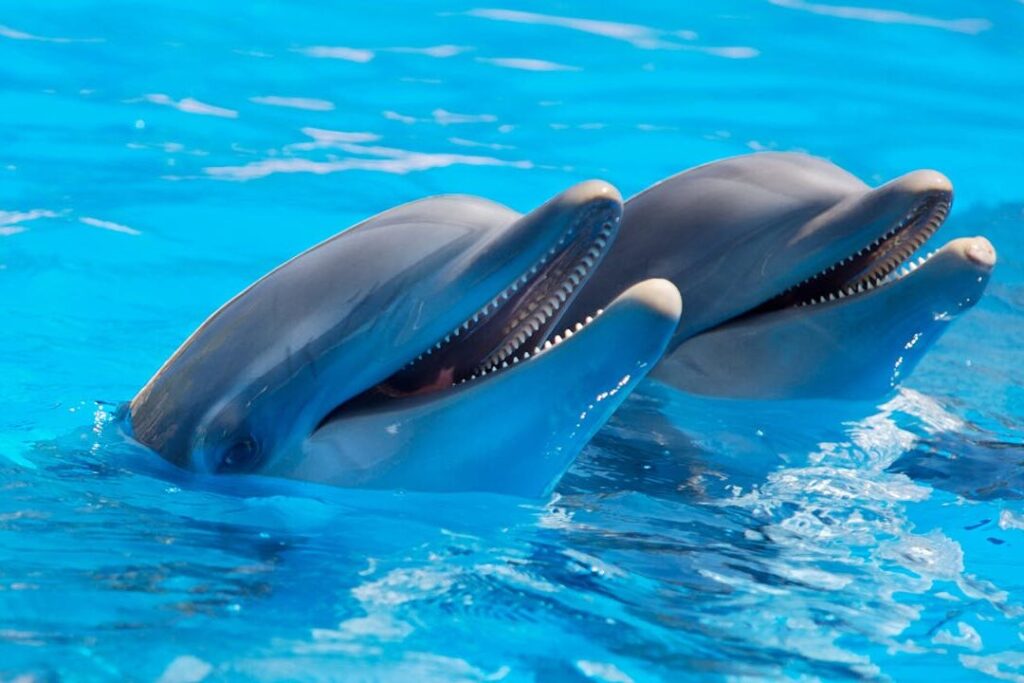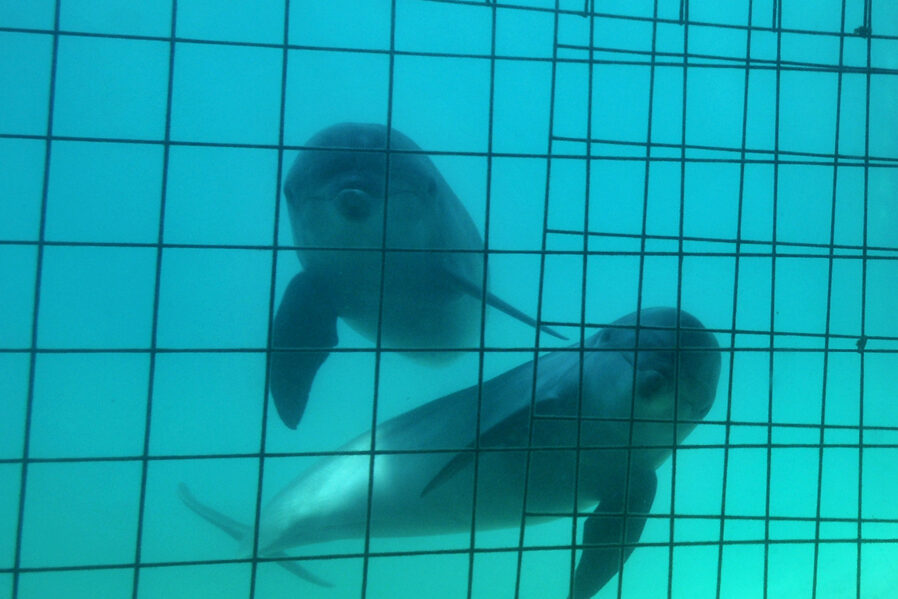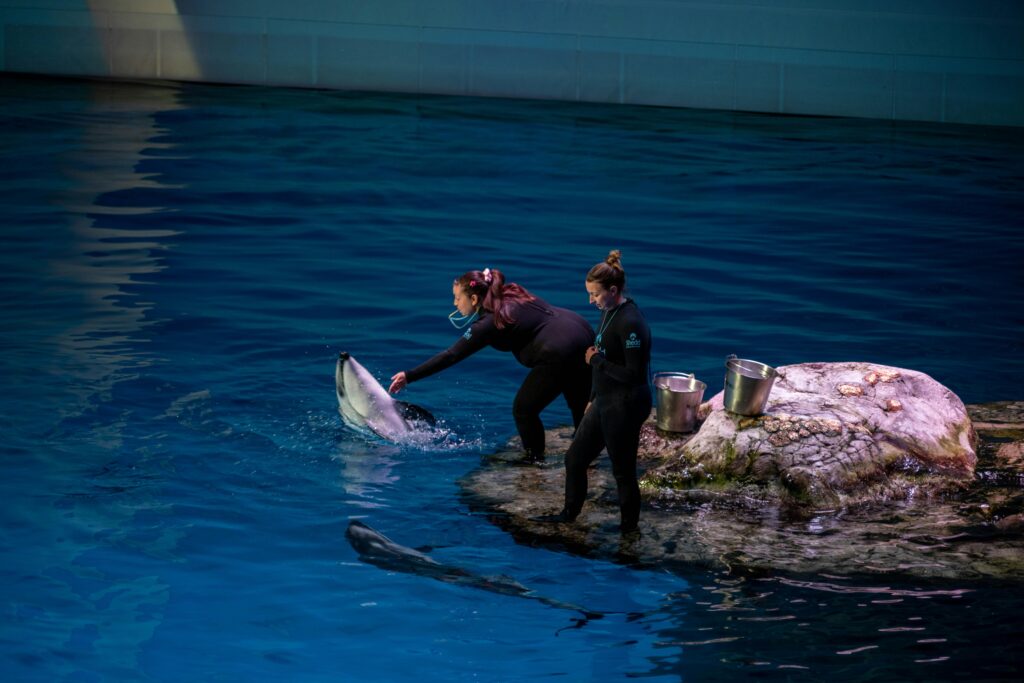1. The Allure of Dolphins: A Symbol of Peace and Healing

Dolphins have long been revered as symbols of peace, intelligence, and healing in various cultures. Their playful nature and seemingly empathetic behavior have made them a favorite among humans, especially those seeking alternative therapies. The idea of giving birth in the presence of dolphins taps into this deep-seated admiration, offering a sense of calm and connection to nature. For many, the thought of bringing a new life into the world surrounded by these gentle creatures feels like a spiritual and transformative experience.
However, experts caution that the allure of dolphins can sometimes overshadow the practical realities of childbirth. While dolphins are indeed intelligent and social animals, their behavior in the wild is unpredictable. The idea of a dolphin-assisted birth often stems from romanticized notions rather than scientific evidence. It’s important to remember that childbirth is a complex medical process, and the presence of dolphins does not guarantee a safer or more meaningful experience.
2. The Myth of Dolphin Midwives: Separating Fact from Fiction

One of the most persistent myths surrounding dolphin-assisted birth is the idea that dolphins can act as midwives, guiding the baby out of the womb or providing emotional support to the mother. This belief is often fueled by anecdotal stories and sensationalized media reports. While dolphins are known to be curious and may approach humans in the water, there is no scientific evidence to suggest they have any understanding of childbirth or the ability to assist in the process.
Experts emphasize that dolphins are wild animals, and their behavior is driven by instinct rather than any desire to help humans. The idea of dolphin midwives is a romanticized concept that ignores the complexities of both dolphin behavior and human childbirth. It’s crucial for expectant mothers to approach this idea with a healthy dose of skepticism and prioritize their safety and well-being over any perceived benefits of dolphin-assisted birth.
3. The Reality of Water Birth: Benefits and Risks

Water birth has gained popularity in recent years due to its potential benefits, such as reduced pain and a more relaxed birthing experience. Proponents of dolphin-assisted birth often argue that the presence of dolphins enhances these benefits, creating a unique and magical atmosphere. While water birth can indeed be a positive experience for some women, it’s important to weigh the potential risks, such as infection or complications during delivery.
Experts note that water birth should always be conducted under the supervision of trained medical professionals in a controlled environment. The addition of dolphins introduces an unpredictable element that could compromise the safety of both mother and baby. While the idea of a dolphin-assisted water birth may sound appealing, it’s essential to prioritize medical safety over the desire for a unique experience.
4. The Ethical Concerns: Exploitation of Dolphins

The practice of dolphin-assisted birth raises significant ethical concerns about the exploitation of these intelligent creatures. Dolphins are highly social animals that thrive in their natural habitats, and removing them from these environments for human purposes can cause stress and harm. Many experts argue that using dolphins for childbirth or other forms of therapy is unethical and disregards their well-being.
Furthermore, the demand for dolphin-assisted experiences has led to the capture and confinement of dolphins in captivity, where they often suffer from poor living conditions and shortened lifespans. The ethical implications of using dolphins for childbirth should not be overlooked, and expectant mothers should consider the impact of their choices on these animals. It’s important to seek out ethical and sustainable alternatives that respect the rights and dignity of all living beings.
5. The Psychological Impact: A Mixed Bag of Emotions

For some women, the idea of giving birth with dolphins can evoke feelings of joy, connection, and empowerment. The presence of these gentle creatures may provide a sense of comfort and reduce anxiety during labor. However, the reality of the experience may not always live up to these expectations, leading to disappointment or even trauma.
Experts caution that the psychological impact of dolphin-assisted birth can vary widely depending on the individual and the circumstances. While some women may find the experience deeply meaningful, others may feel overwhelmed or frightened by the unpredictability of the dolphins’ behavior. It’s important for expectant mothers to carefully consider their emotional needs and preferences before committing to such an unconventional birthing method.
6. The Role of Media: Glamorizing Dolphin-Assisted Birth

The media has played a significant role in popularizing the idea of dolphin-assisted birth, often portraying it as a magical and transformative experience. Television shows, documentaries, and social media posts have contributed to the romanticized image of dolphins as gentle midwives and healers. While these portrayals may be visually appealing, they often lack the critical perspective needed to evaluate the practice objectively.
Experts argue that the media’s glamorization of dolphin-assisted birth can create unrealistic expectations and downplay the potential risks and ethical concerns. It’s important for expectant mothers to seek out balanced and evidence-based information rather than relying on sensationalized media narratives. By doing so, they can make informed decisions that prioritize their safety and well-being.
7. The Cost Factor: A Pricey and Exclusive Experience

Dolphin-assisted birth is often marketed as a luxury experience, with high costs that make it inaccessible to most people. The price tag includes not only the birthing process but also accommodations, travel, and other associated expenses. For many, the financial burden of such an experience may outweigh any perceived benefits.
Experts note that the exclusivity of dolphin-assisted birth raises questions about equity and access to alternative birthing methods. While some women may be able to afford this unique experience, the majority are left with more conventional options. It’s important to consider whether the high cost of dolphin-assisted birth is justified, especially when there are other safe and meaningful ways to bring a child into the world.
8. The Environmental Impact: Disrupting Marine Ecosystems

The practice of dolphin-assisted birth often takes place in controlled environments such as marine parks or private lagoons, which can have a negative impact on marine ecosystems. The capture and confinement of dolphins for these purposes disrupts their natural behavior and can harm local wildlife. Additionally, the presence of humans in these environments can lead to pollution and habitat destruction.
Experts emphasize the importance of considering the environmental consequences of dolphin-assisted birth. The desire for a unique birthing experience should not come at the expense of the planet’s fragile ecosystems. It’s crucial to seek out sustainable and eco-friendly alternatives that minimize harm to the environment and respect the natural world.


